01:06
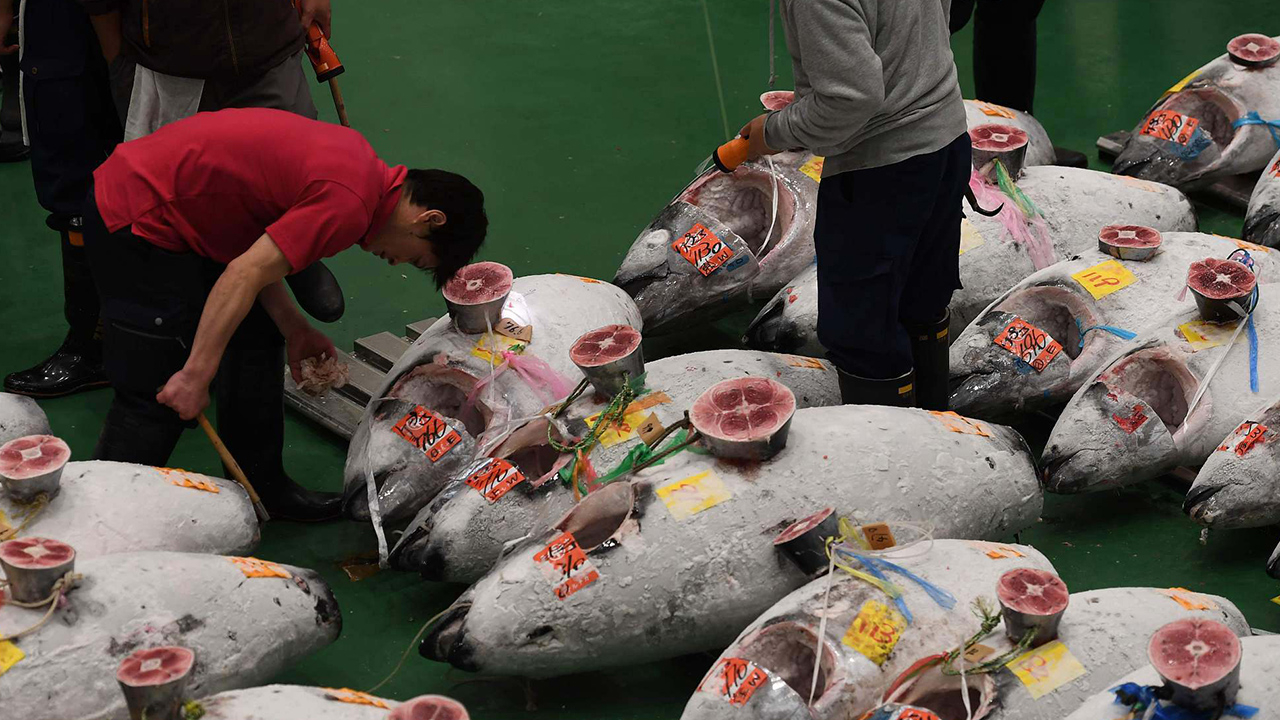
The cries of the raucous pre-dawn tuna auction rang out for the first time at Tokyo's new fish market Thursday, just days after the world-famous Tsukiji site closed the door on its 83-year history.
The location may have changed but the ritual remained the same: huge whole tuna laid out on the ground, bells tolling to sound the start of the auction and a loud and bewildering system of bidding understood only by those taking part.
"There we go. We're off," said Kiyoshi Kimura, one of the celebrities of the sushi world, who owns the Sushi Zanmai chain and has previously paid record prices for tuna at New Year auctions.
"We won't get the same prices today," he told AFP with a smile before bidding began in an auction that didn't set any new records.
On Sunday, after an emotional final tuna auction the previous day, the Tsukiji market's famed "turret trucks" - one-man flatbeds with a barrel-shaped steering column at the front - began the exodus to the new site.
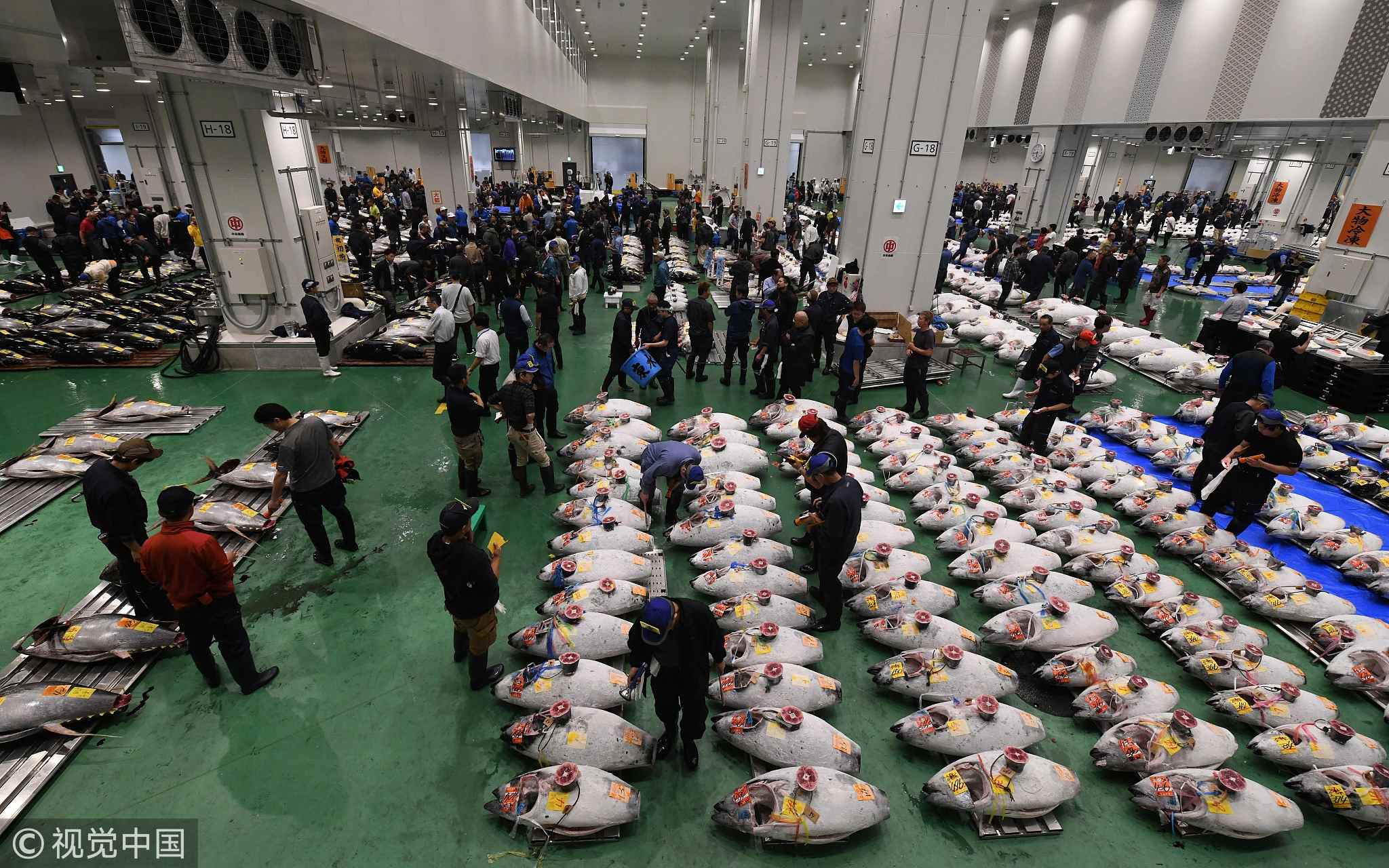
Buyers, workers, and auctioneers attend the first tuna auction at the new Toyosu fish market, the first day of the market's opening in Tokyo, October 11, 2018. /VCG Photo
Buyers, workers, and auctioneers attend the first tuna auction at the new Toyosu fish market, the first day of the market's opening in Tokyo, October 11, 2018. /VCG Photo
However, the move was a lengthy and controversial process. Few would contest the fact that Tsukiji was past its prime, and there were concerns about outdated fire regulations and hygiene controls.
In contrast, the new market, located around two kilometers to the east at Toyosu, boasts state-of-the-art refrigeration facilities and is nearly twice as big again as Tsukiji, already the world's largest.
But Toyosu is located on the site of a former gas plant and the soil was found to be contaminated, forcing local authorities to spend millions of dollars to clean it up and delaying the move.
'Not the same atmosphere'
The early morning tuna auction at Tsukiji became an institution and was high on the wish-list for tourists to the Japanese capital, who lined up from the night before to be one of the 120 allowed to witness the organised chaos.
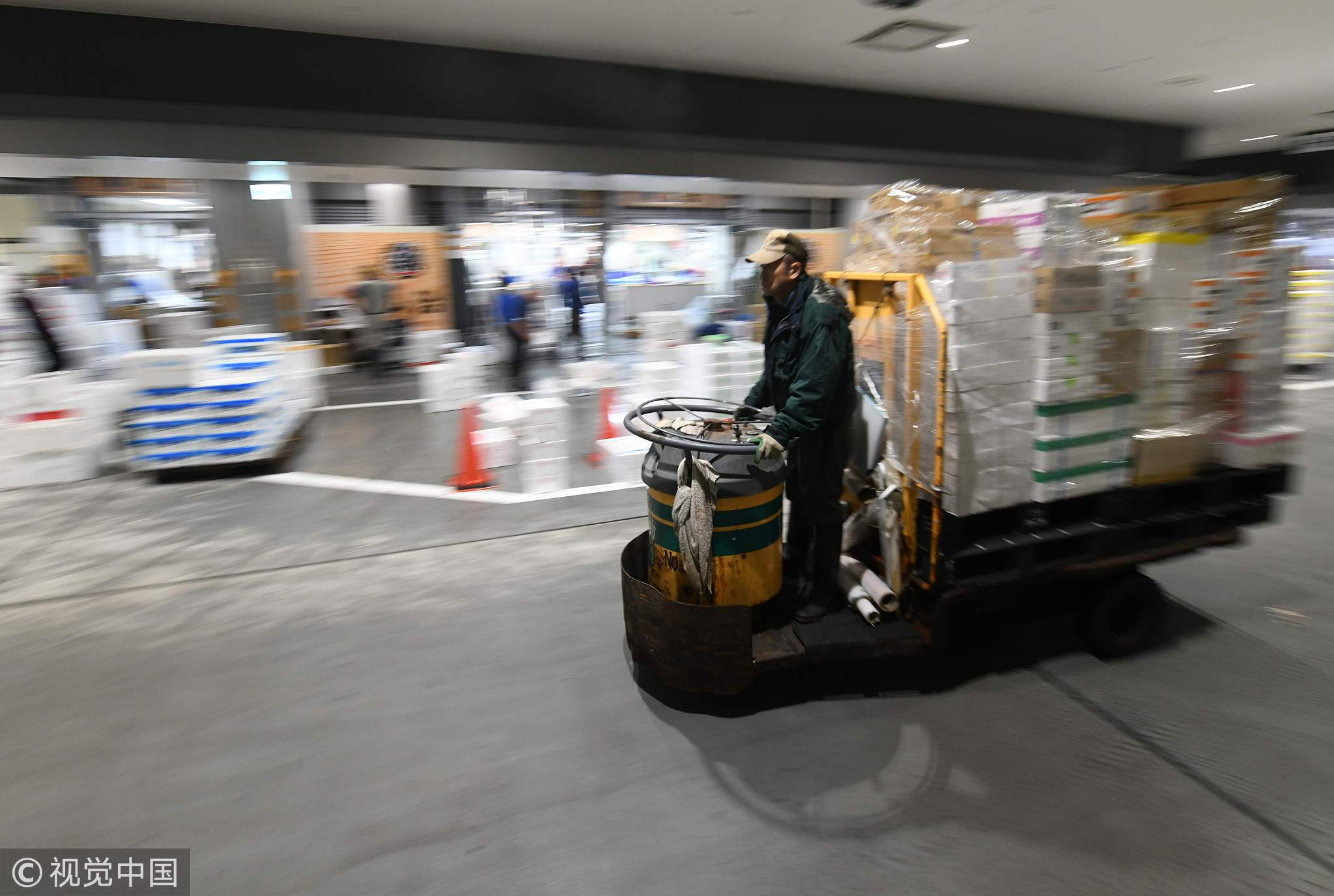
A turret truck moves among shops at the new Toyosu fish market, the first day of the market's opening in Tokyo on October 11, 2018. /VCG Photo
A turret truck moves among shops at the new Toyosu fish market, the first day of the market's opening in Tokyo on October 11, 2018. /VCG Photo
Especially at the first auction of the new year, wholesalers and sushi tycoons have been known to pay eye-watering prices for the biggest and best fish.
The record still stands from 2013 when 155.4 million yen (1.8 million US dollars) was paid for a 222-kilogram bluefin.
The move affected not only the famed fishmongers but also fruit and vegetable vendors, restaurants and other shops in the inner market.
The so-called outer market, with bricks-and-mortar shops selling everything from seaweed to coffee, has stayed put.
But the warehouses that housed vendors and additional shops and restaurants are expected to be leveled to make way, initially, for a transport depot for the 2020 Olympic Games.
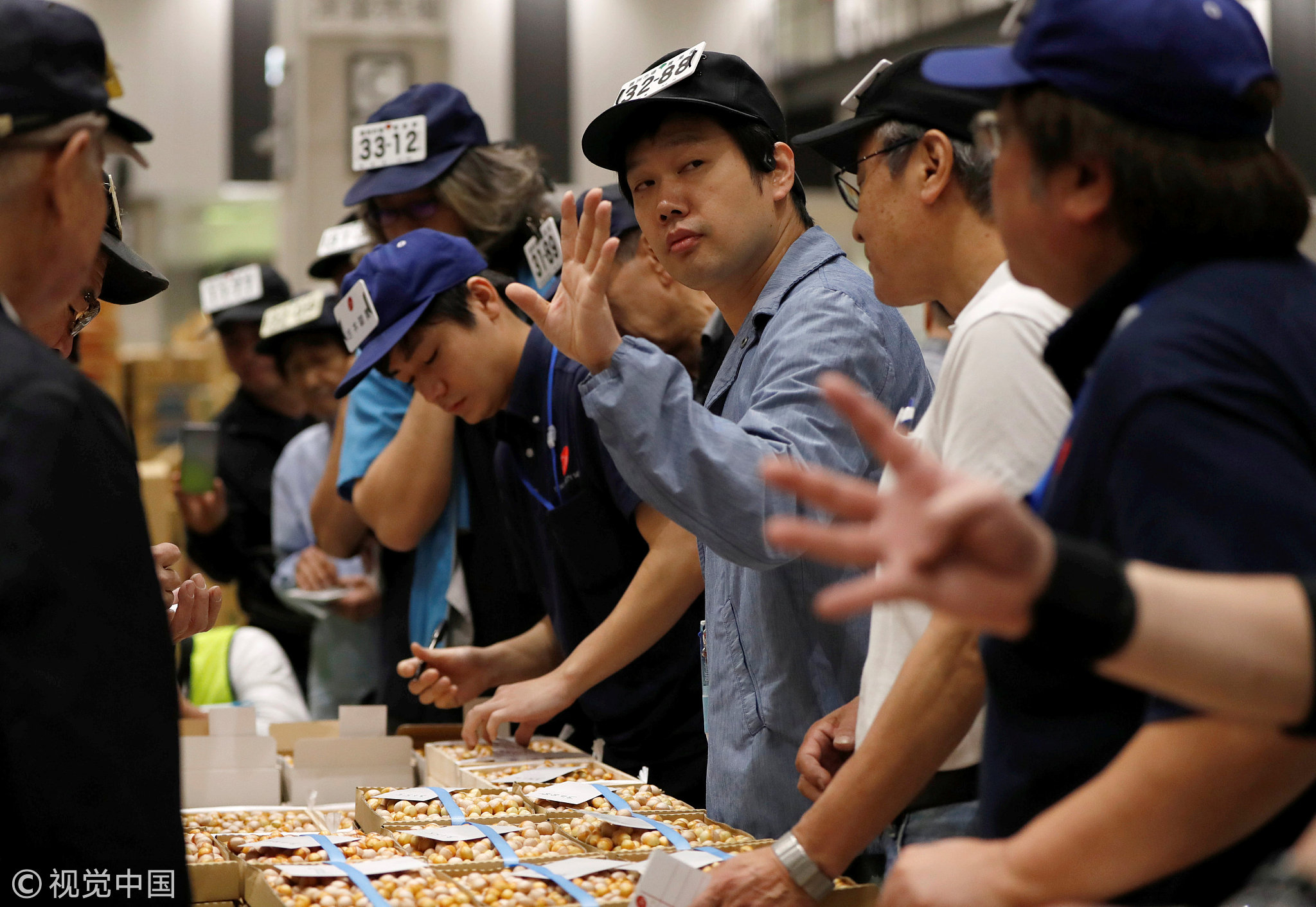
Wholesalers take part in an auction at a greengrocery area on the opening day of the new Toyosu market, which has been relocated from Tsukiji market, in Tokyo, October 11, 2018. /VCG Photo
Wholesalers take part in an auction at a greengrocery area on the opening day of the new Toyosu market, which has been relocated from Tsukiji market, in Tokyo, October 11, 2018. /VCG Photo
Tokyo mayor Yuriko Koike has insisted the new complex is safe and will provide a "cutting-edge" environment for the selling of fish.
However, for some Tsukiji veterans competing in their first auction in the brand-new, sanitized and enclosed new arena, the move has deprived the market of some of its soul.
"It's not the same atmosphere as at Tsukiji," said Lionel Beccat, a Michelin-starred chef who has been going to the pre-dawn auctions for years.
"On a purely professional level, maybe Toyosu is better, but on a sentimental level, it's Tsukiji. The head says yes, but the heart says no," Beccat told AFP, referring to the new location.
Not everyone was downbeat, however.
Masahiko Ogaki, who works at the fish market, said: "Well I'm getting old, but thinking about the future, I think this will be a fun place for young people to work. I think they'll be happier here."
"I wish I could be one of them."
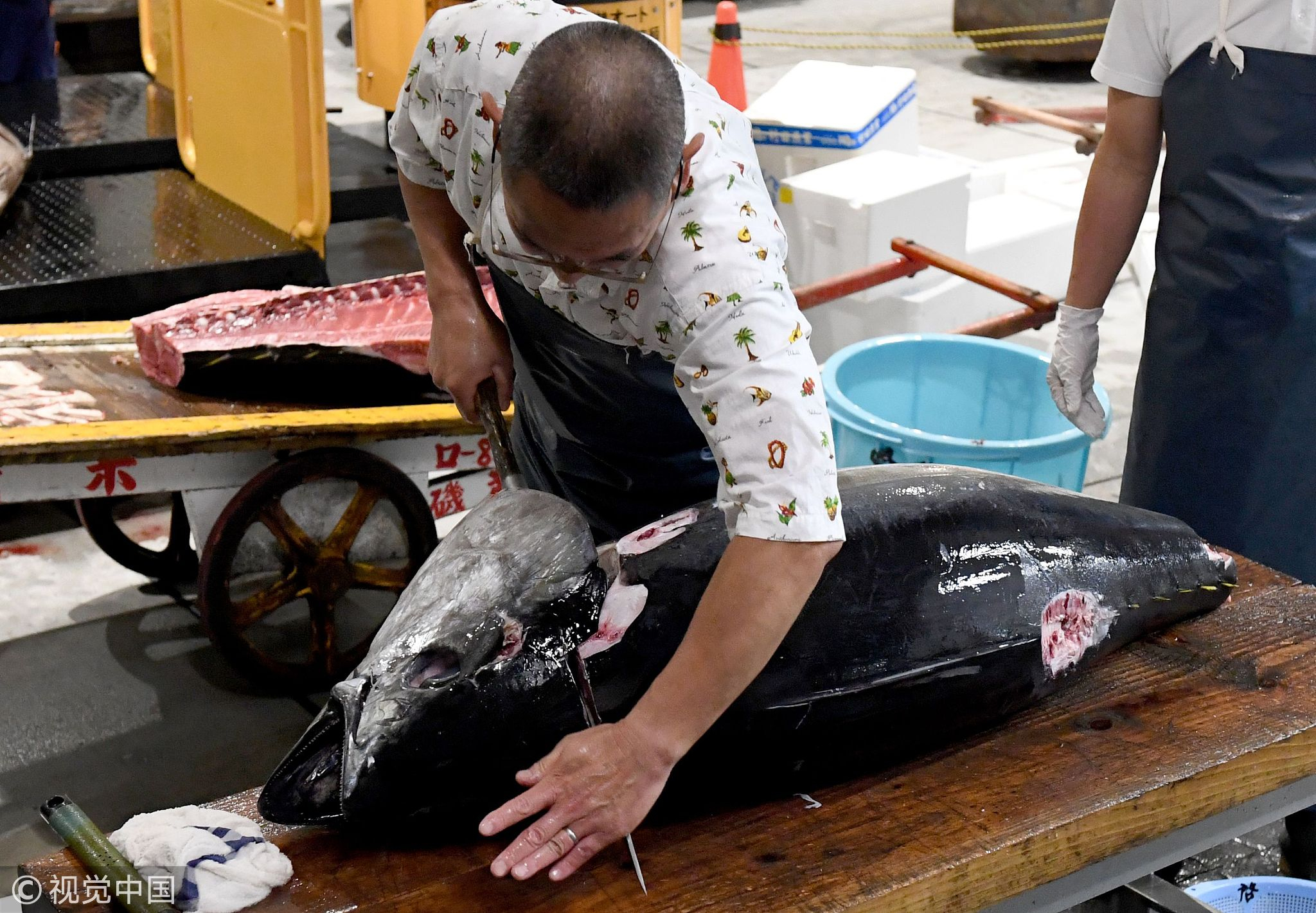
A worker at the fish brokage cuts tuna at the new Toyosu fish market, the first day of the market's opening in Tokyo, October 11, 2018. /VCG Photo
A worker at the fish brokage cuts tuna at the new Toyosu fish market, the first day of the market's opening in Tokyo, October 11, 2018. /VCG Photo
'Not completely reassured'
Koike has promised to listen to the numerous complaints about parking spaces for vans and traffic jams.
"It's too early to say how it will turn out. We'll see when we start using it but we are not completely reassured," said one tuna trader.
Meanwhile, back at Tsukiji, a few dozen protesters broke through lines of city officials and forced their way back into the old premises - populated now mainly by rats.
Some protesters have suggested keeping the Tsukiji site in case of serious problems at Toyosu.
"We didn't want it to come to this but we wanted to come here because it's our right. We still have a commercial license here. We have not given it up," said one fishmonger.
(Cover: Buyers, workers, and auctioneers attend the first tuna auction at the new Toyosu fish market, the first day of the market's opening in Tokyo, October 11, 2018. /VCG Photo)
Source(s): AFP






